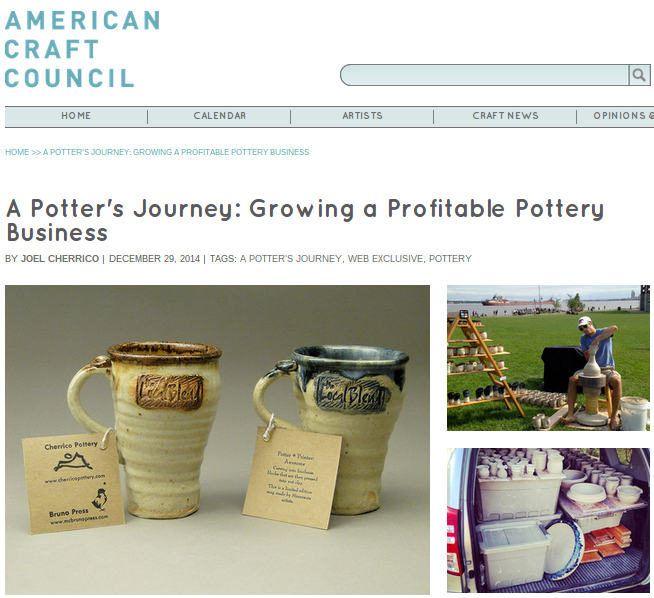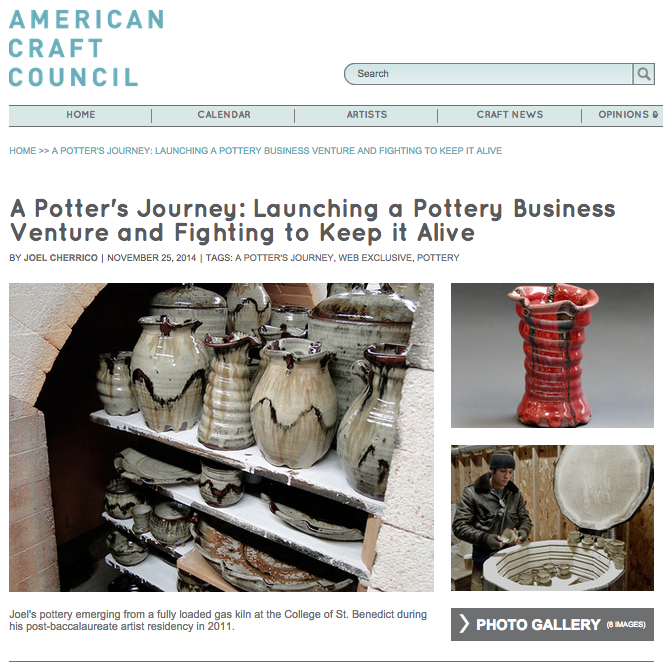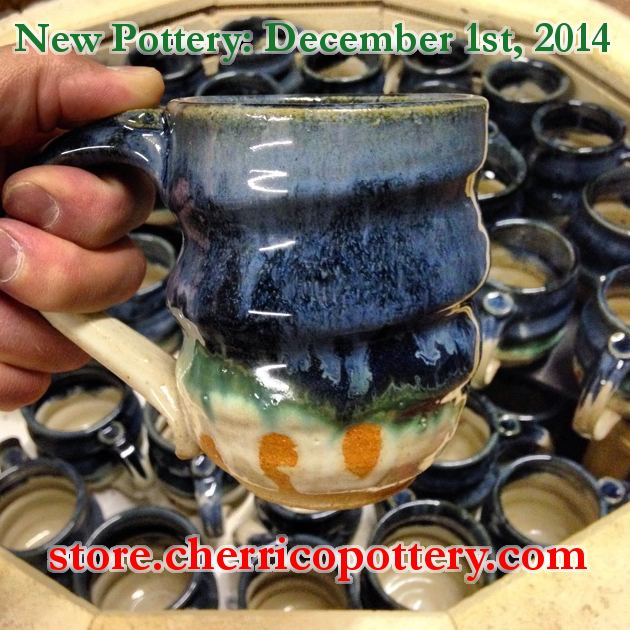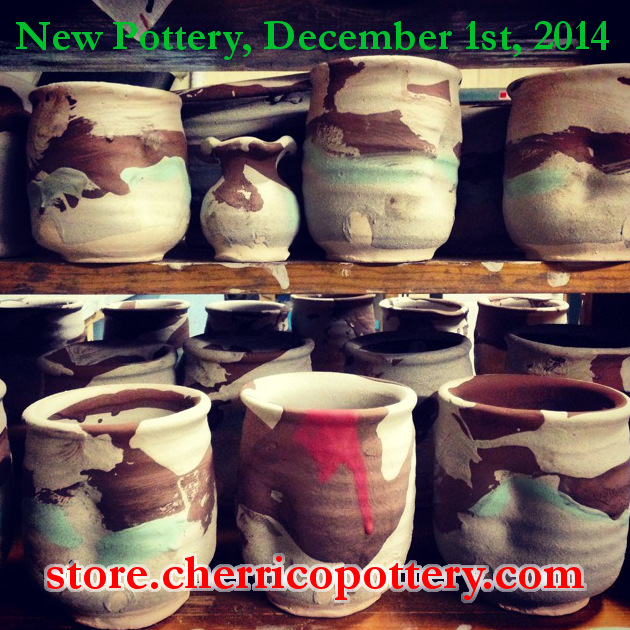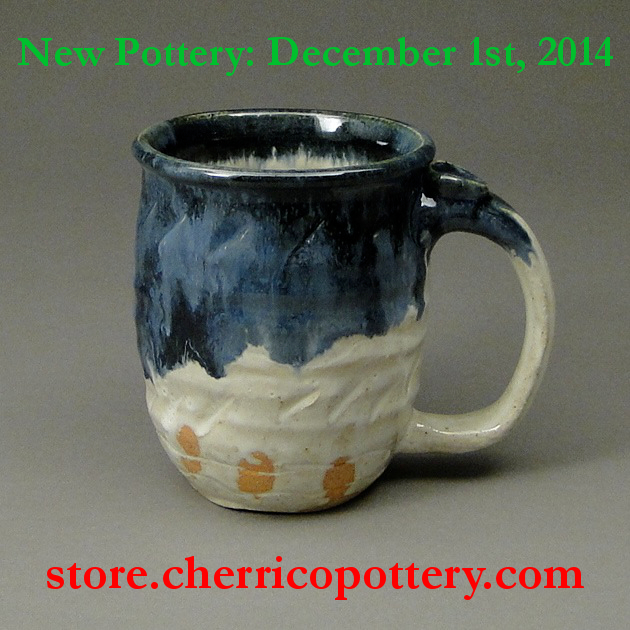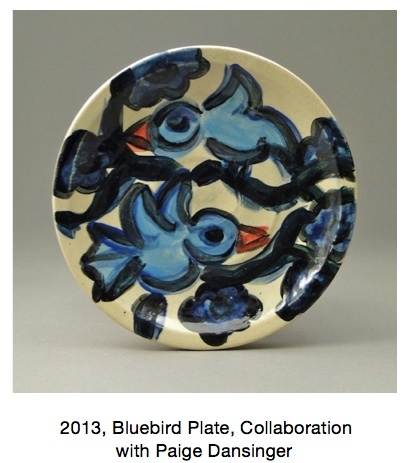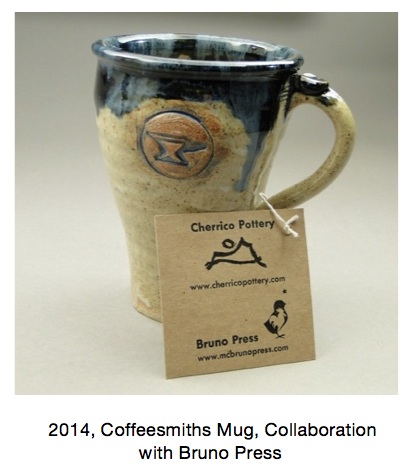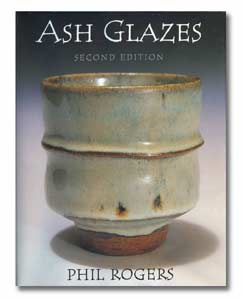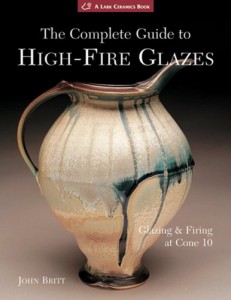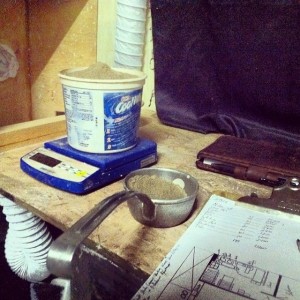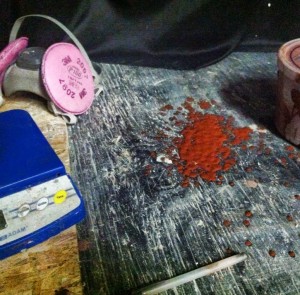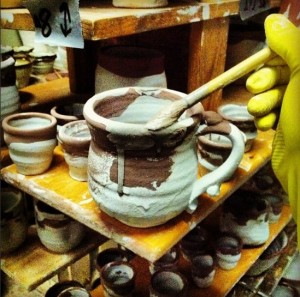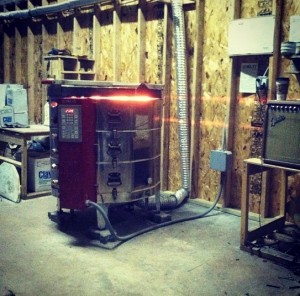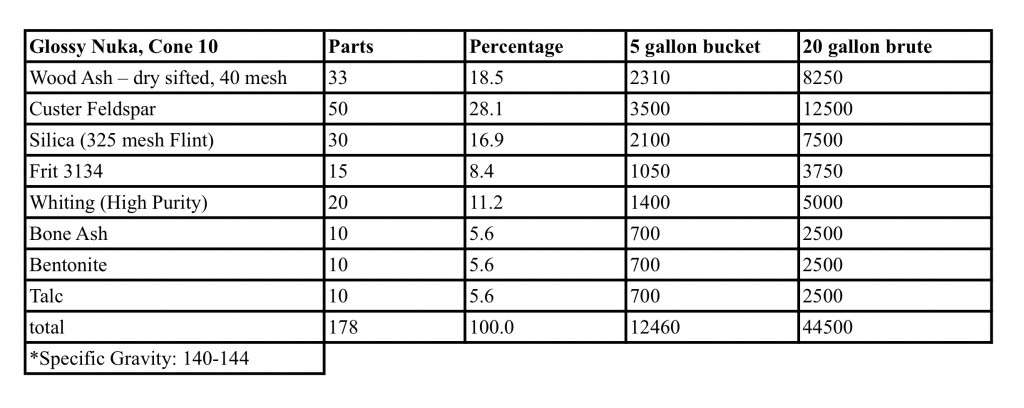This is the sixth post in a series entitled, “A Potter’s Journey” for American Craft Council’s website. This post tells the story of growing my pottery business into a profitable livelihood:
American Craft Council, “A Potter’s Journey: Launching a Pottery Business Venture and Fighting to Keep it Alive”
This is the fifth post in a series entitled, “A Potter’s Journey” for American Craft Council’s website. This post tells the story of launching my pottery business venture immediately after college graduation, as well as the trials and tribulations that I overcame during the first 3 years of business:
“A Potter’s Journey: Launching a Pottery Business Venture and Fighting to Keep it Alive”
Check back for my newest pottery, available in my online store December 1st:
Local Blend, National Trend: Millstream Arts Festival 2014
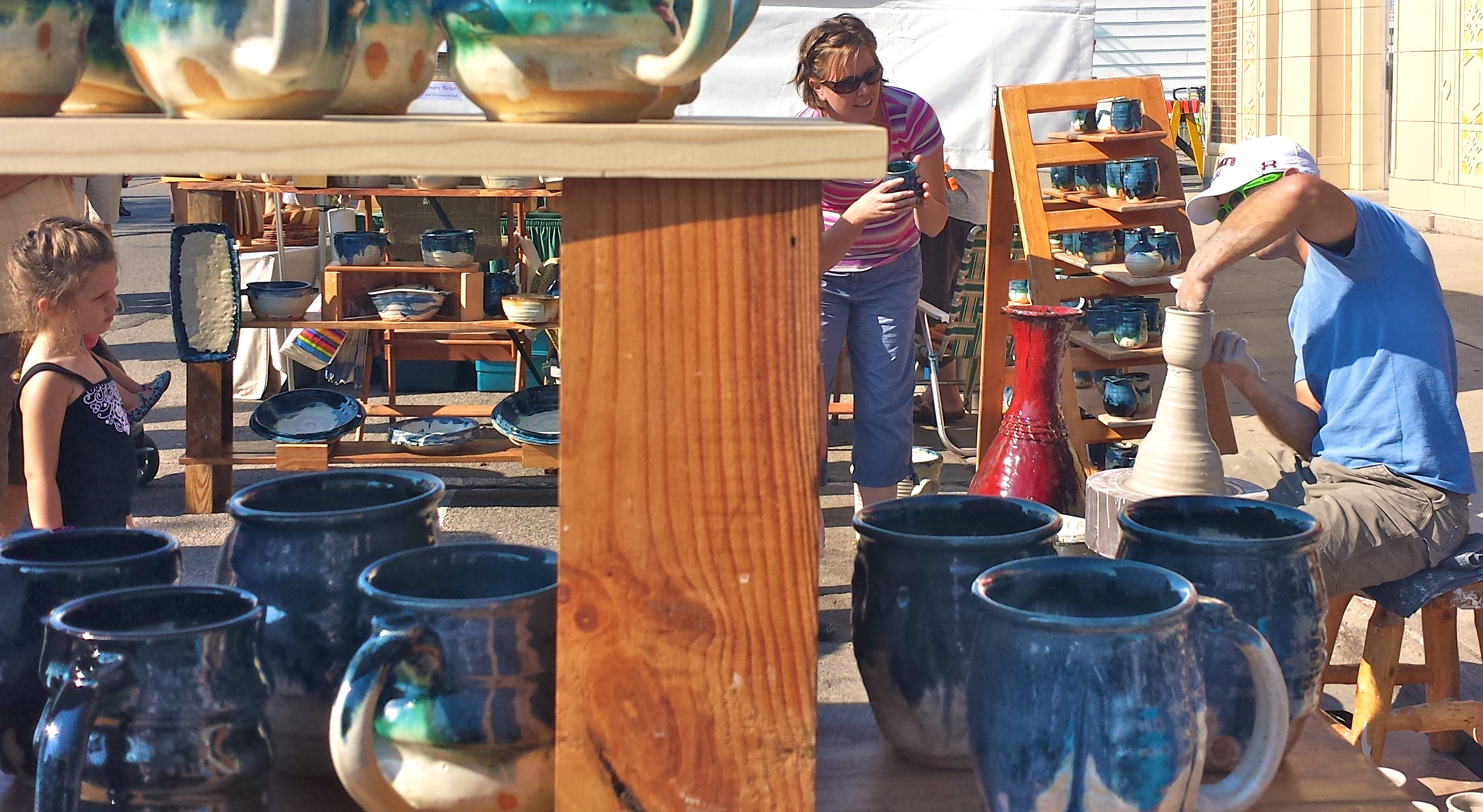
With the winter-threatening winds howling outside, can you believe this sunny photo was taken less than two weeks ago? On Sunday, September 29th, the weather was a summery 80 degrees for the Millstream Arts Festival. Sixty-four artists sweated it out on the streets of St. Joseph, bringing in sales not only for themselves, but also for local businesses.
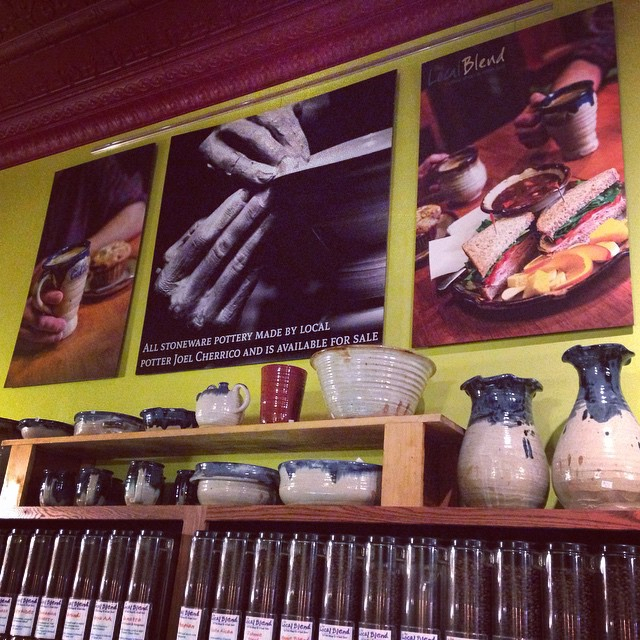
Joel’s unique symbiotic partnership with the Local Blend continues to cultivate this relationship between artist and business year-round. This was Joel’s fourth year participating in Millstream and his second year throwing pots in front of the Local Blend. This location and his kick-powered wheel have consistently shown to bring in more sales. If you weren’t looking closely as you strolled down Minnesota Street, you may have missed him because of the crowd that gathered to watch pots being made!
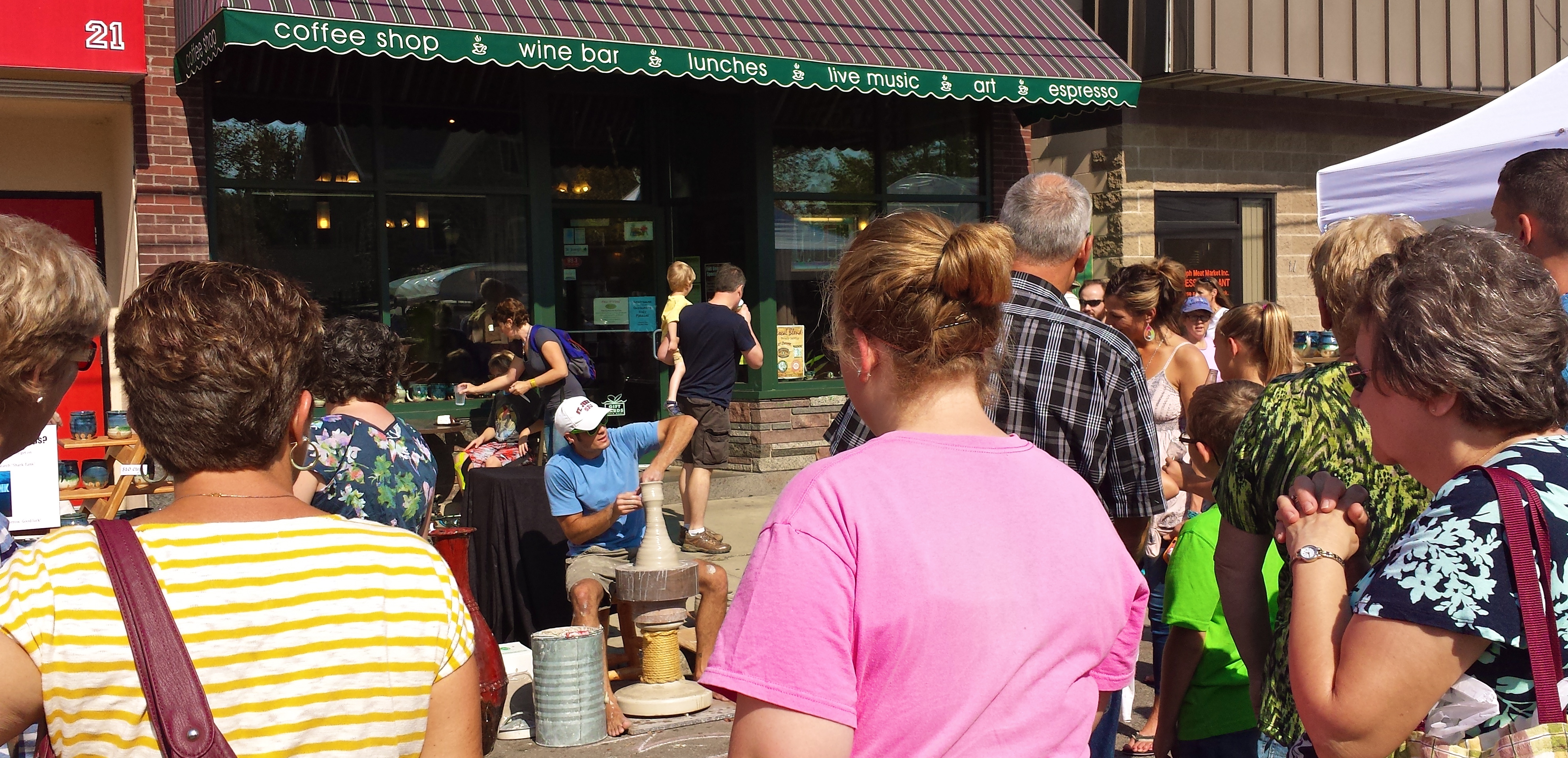
Many of you may have heard about (and maybe entered!) Joel’s recent Shark Tank Pottery Giveaway. We selected the winners the day after Millstream, and gave those who stopped by the booth one last reminder to enter.
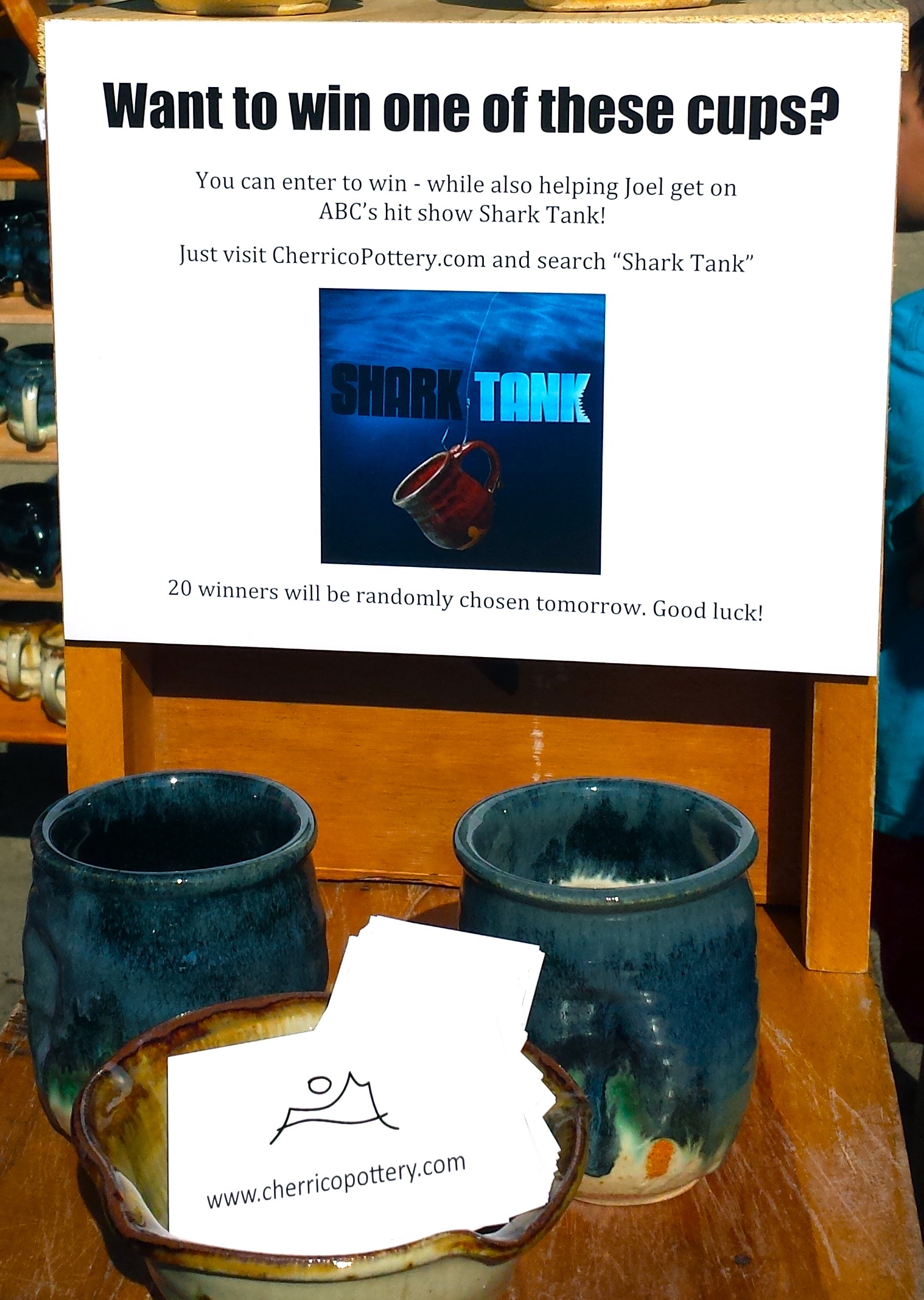
As fun as this contest was, as much as Joel wants to bring his wheel to national TV – the local community remains paramount to his business model and poignant to him as an artist. This is where his pottery began. The local community is where Joel earns his livelihood, giving him the stability to pursue his bigger dreams and schemes.
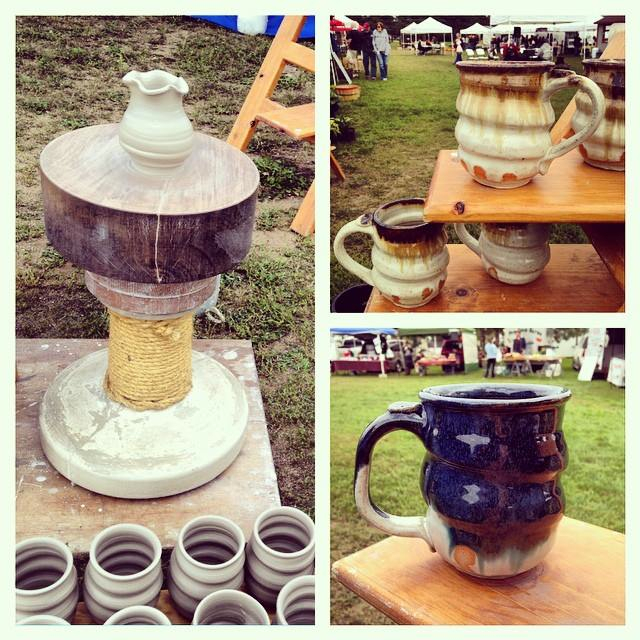
Joel participates in 3 weekly farmers’ markets in Sartell, St. Cloud, and St. Joseph, Minnesota. These farmers’ markets, along with art festivals such as Millstream and Art in Bayfront Park in Duluth, Minnesota, cultivate the local emphasis essential to Joel’s artistic philosophy. Here, customers can handle the pottery, watch it being made, and get to know the artist.
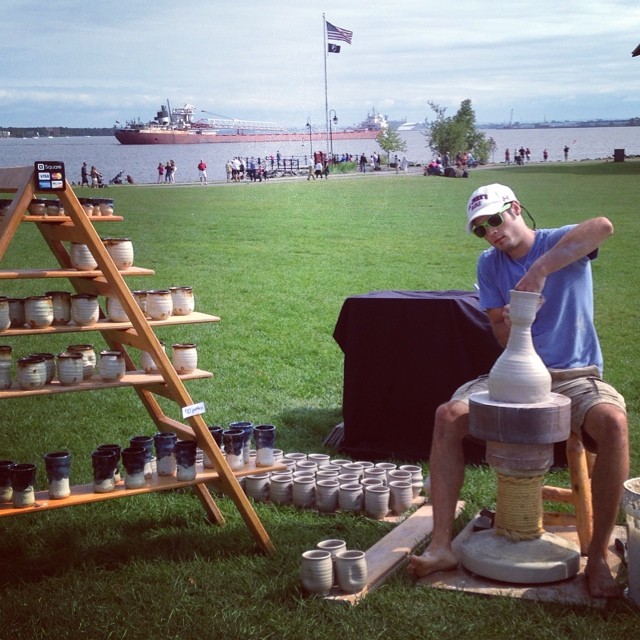
Then, when someone takes home a mug, its mysteries become more accessible and appreciated. That spiral in the clay, those finger marks in the glaze, they now have memory and meaning in them.
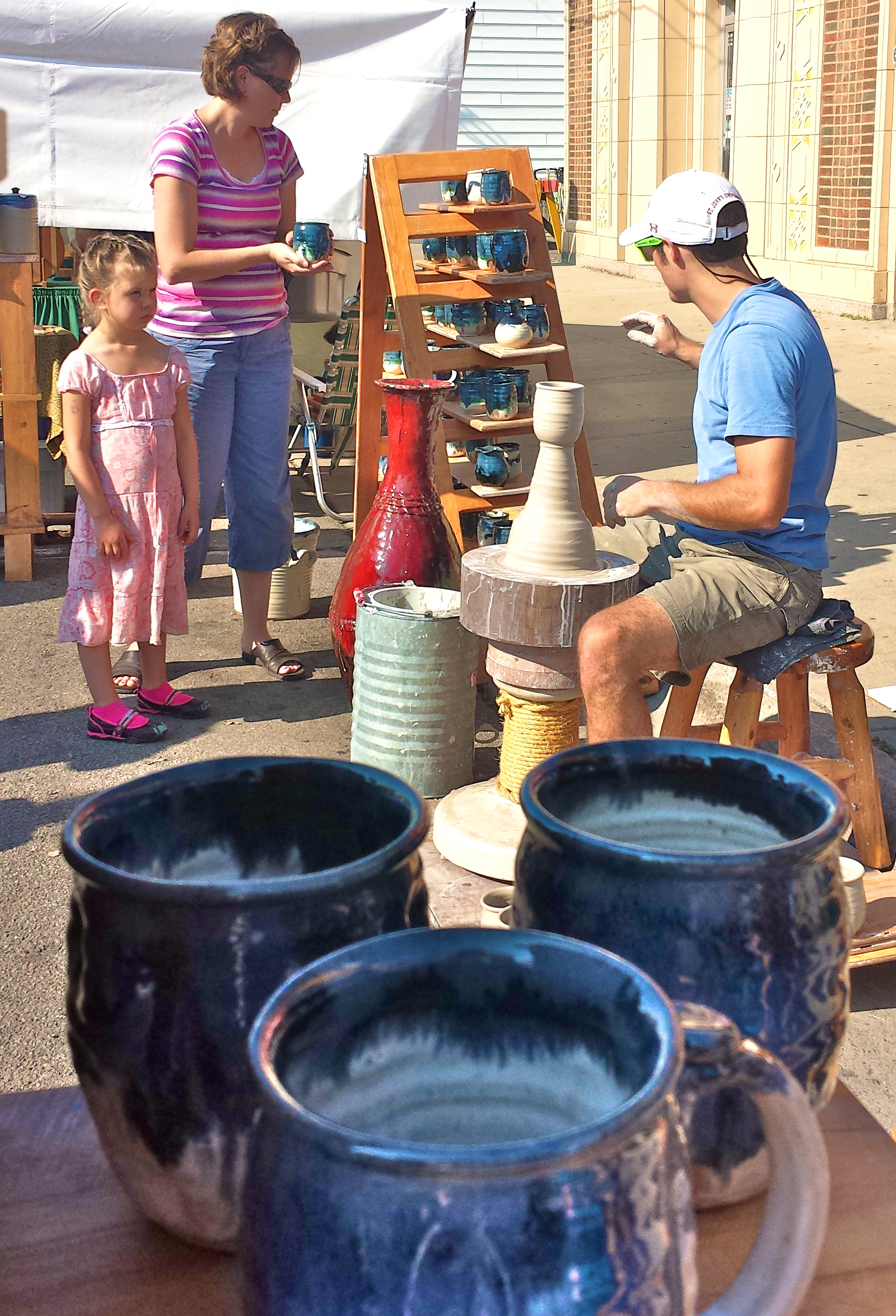
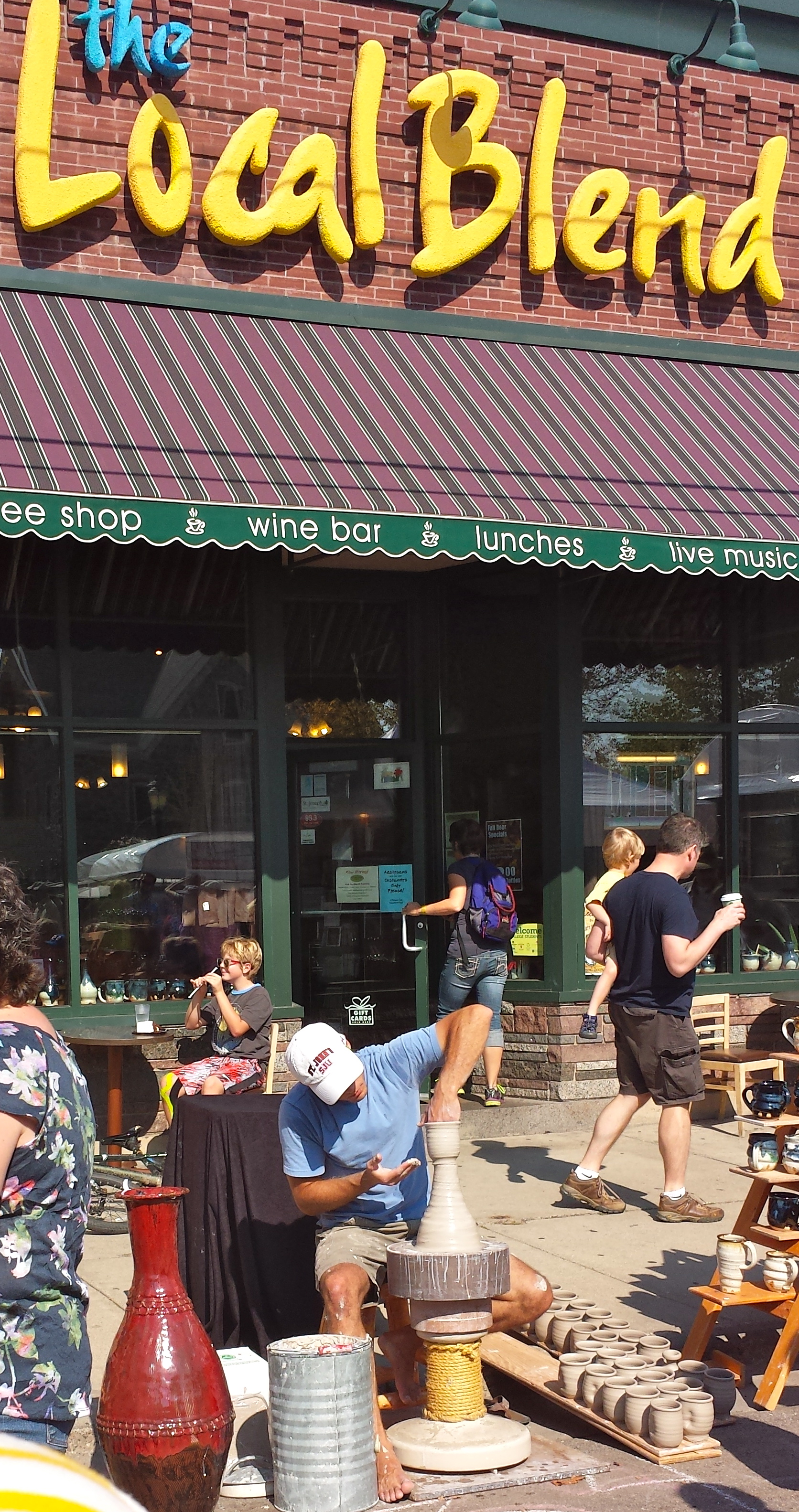
Ogres, Princesses, and Pretty Blue Glazes
I remember the first time glazing a pot in Sam Johnson’s ceramics class last year. I had made this slightly uneven coil vase with pockmarked walls nearly an inch thick. The piece was truly ugly, an ogre really, but I couldn’t see the pot as anything other than beautiful. It was my Princess Fiona and I was its Shrek…At least until I glazed it.
Like most naive ceramics students, I pictured glazing just like painting. I picked out a handful of colors using the test tiles as my guide, and then brushed swooping glaze patterns all over my vase. By the time I finished, the pot looked like something straight out a kindergarten arts and crafts class. I on the other hand thought it was a masterpiece – a trophy of abstract art. When the thing (it was beyond a pot at this point) finally came out of the kiln, it was hideous. I looked over at my professor for encouragement. Sam walked over, took one look at my monster, turned to the class and said:
“Opening a kiln can be like Christmas or Halloween. Either the pots look amazing and you fall in love, or the results are horrible and you want to smash everything.”
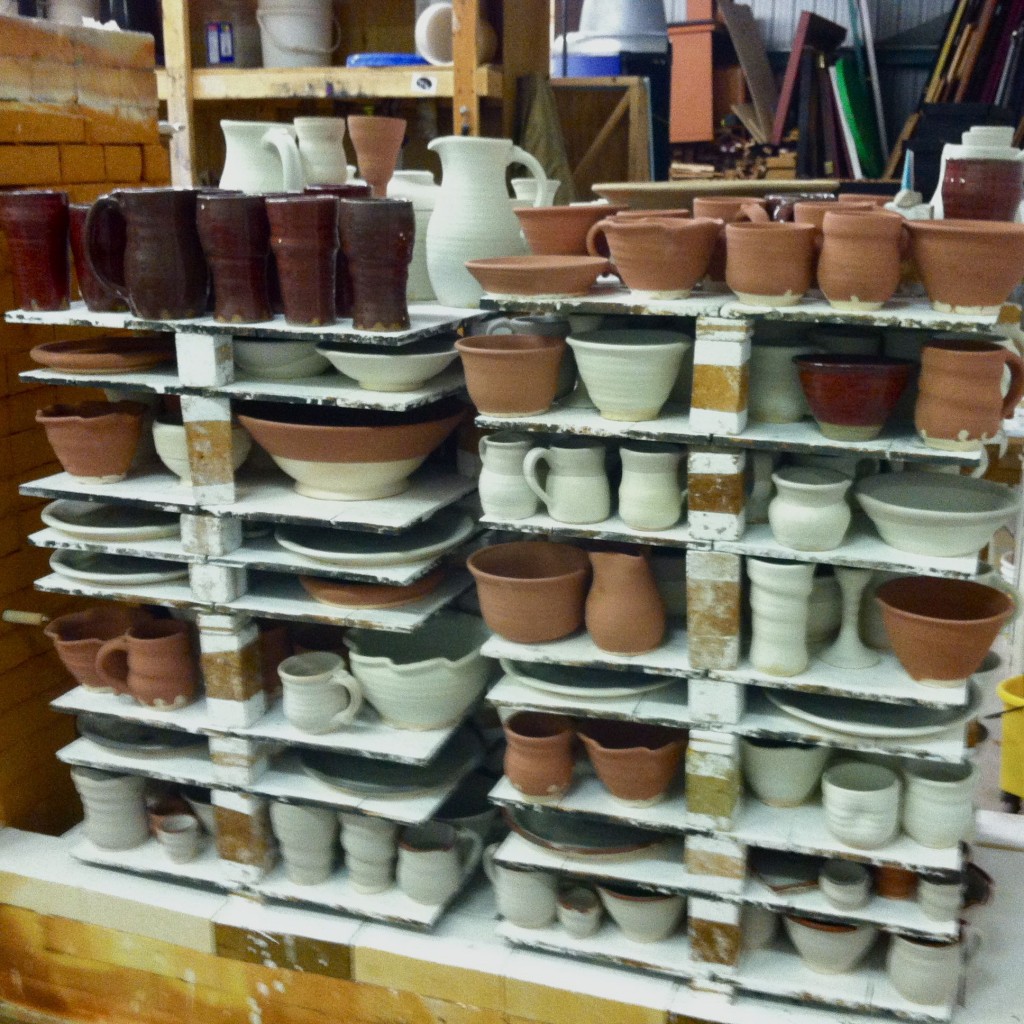
Unlike my great clay ogre, Joel can’t afford to make ugly pots. He makes his living through pottery, and as a result, his experiments with glaze need to be calculated and precise. He needs to know exactly how each part of the glaze works; how copper, cobalt, and iron make red, blue, and rust colors when the glaze reacts with fire in the kiln. Glazes transform clay bodies from ogres into princesses. However, as Joel continues to explore glaze chemistry, he finds that these potions are often difficult to create. Like the alchemists I wrote about last post, Joel works tirelessly to find the right balance of form and color that’ll turn a clay body into a beautiful work of art. For his livelihood, each glaze must reach for a certain standard of beauty.
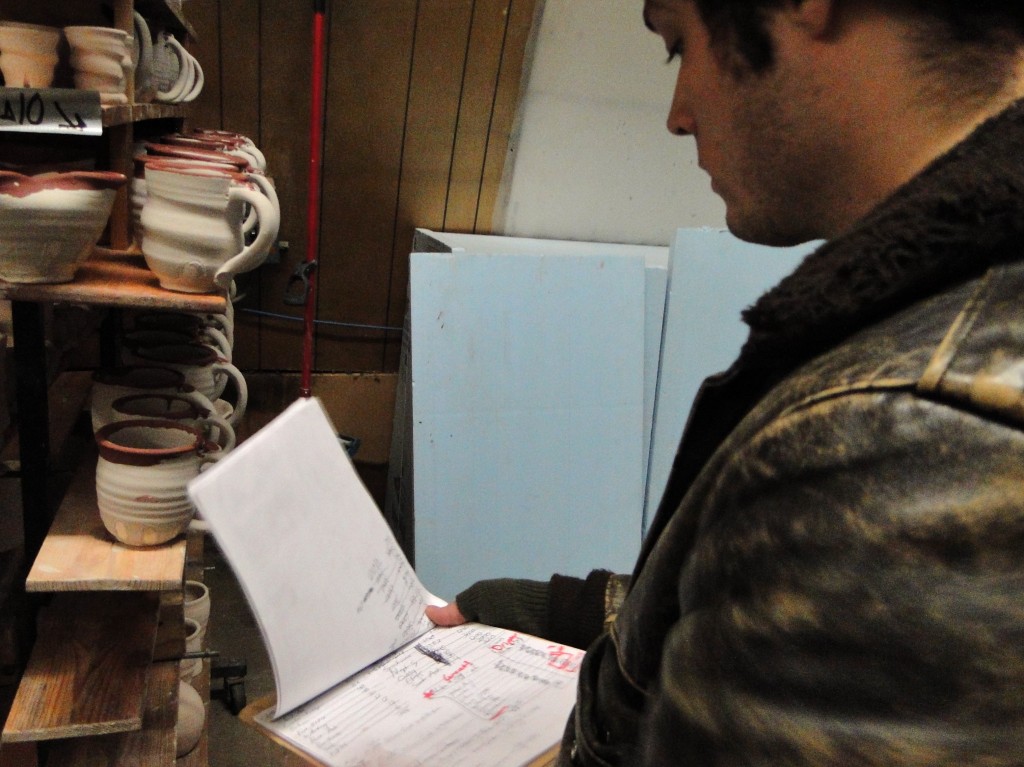
Looking back at his previous body of work, I think Joel’s been chasing this certain type of beauty all along. It’s been hidden in his work throughout the years, and now I feel we’re just starting to uncover it in the color blue.
Take a look at the gallery below to see an evolution of this blue color. Even in woodfiring, salt firing and copper red glazes, the color blue shows up. I can track the color throughout his work back to 2008:
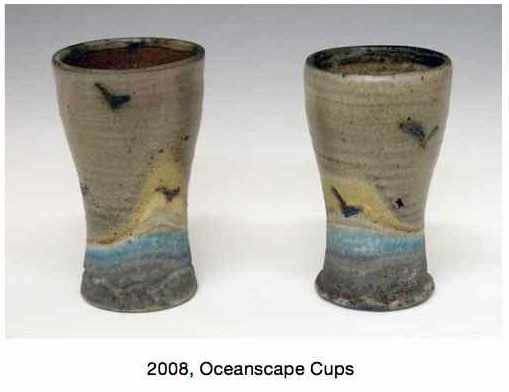
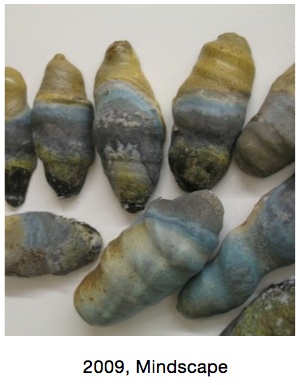
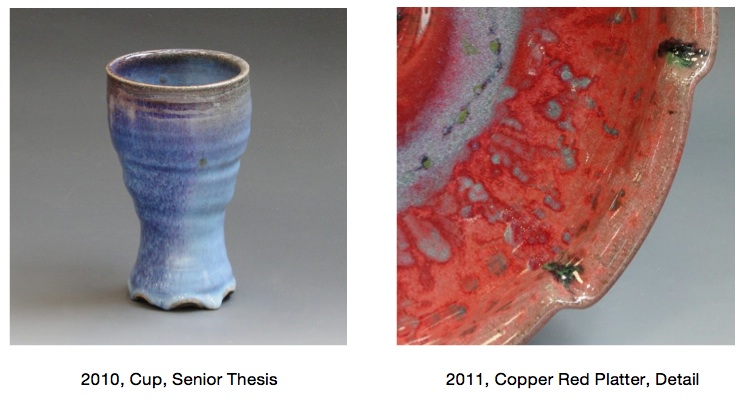
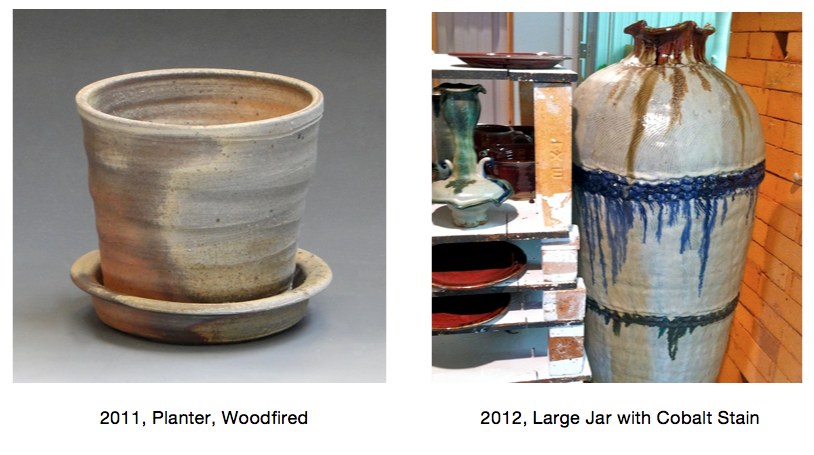
Numerous potters talk about the lore of blue pottery. Throughout the ages, potters can’t seem to shy away from it. I’ve heard some contemporary potters even refer to the color as cash-flow blue.
Our text book this semester has been Bernard Leach’s A Potter’s Book. Now a 50 year old text, Leach provides a rich history of how ceramics has evolved. His book not only offers rich lessons of the past, but it also gives insights into the future. But even Leach, who wrote the book after decades of experience under his belt, could not seem to understand the lure of the color blue in ceramics. These stories share his experiences with blue glazes:
“At my St. Ives workshop each summer we are asked by three visitors out of four for colour and yet more colour, blue and the more intense the better, is easily the favourite.”
– A Potter’s Book, page 36
“Yesterday we had a good bunch of people, 2 of whom at least knew a good pot when they saw it. One woman started by asking if we hadn’t got any ‘blue pots’, and when David showed them that the last olive-blue glaze for which we have experimented for years, she said: ‘Oh! Do you call that blue?'”
– A Potter’s Book, page 227-228
Perhaps what this all boils down to is something we talked about in the beginning -the pursuit of beauty. Some of the best potters in the contemporary art world don’t make beautiful work. Their work is strange, ugly and confusing.
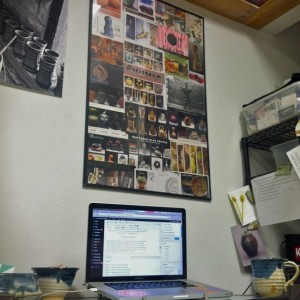 With this in mind, does the color blue still have a place in the contemporary ceramic world? This poster sits above our workspace, and it’s made from postcards Joel picked up in Philadelphia in 2010 at NCECA (National Council for Education for the Ceramic Arts). It gives a snapshot of the contemporary ceramic work, and shows only a handful of simple, blue pots. Joel will be at the conference in Milwaukee next week networking with contemporary potters and pottery enthusiasts. His goal is to show that the color blue continues to have a strong lure in both historical pottery as well as contemporary ceramics. He wants his work to be a bridge between historical potters like Leach and contemporary artists like Paige Dansinger. As a result, we’ve prepared some innovative market ideas, re-designed the website home page, and packed the online store with blue pots and artist collaborations with Dansinger. We’re prepared for the biggest ceramics conference in the country and we’re hoping to lure people to us with our blue pots!
With this in mind, does the color blue still have a place in the contemporary ceramic world? This poster sits above our workspace, and it’s made from postcards Joel picked up in Philadelphia in 2010 at NCECA (National Council for Education for the Ceramic Arts). It gives a snapshot of the contemporary ceramic work, and shows only a handful of simple, blue pots. Joel will be at the conference in Milwaukee next week networking with contemporary potters and pottery enthusiasts. His goal is to show that the color blue continues to have a strong lure in both historical pottery as well as contemporary ceramics. He wants his work to be a bridge between historical potters like Leach and contemporary artists like Paige Dansinger. As a result, we’ve prepared some innovative market ideas, re-designed the website home page, and packed the online store with blue pots and artist collaborations with Dansinger. We’re prepared for the biggest ceramics conference in the country and we’re hoping to lure people to us with our blue pots!

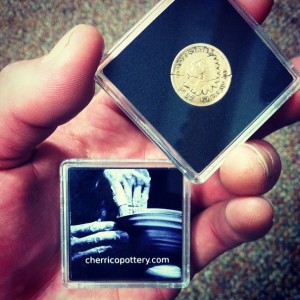
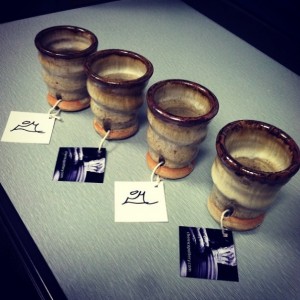
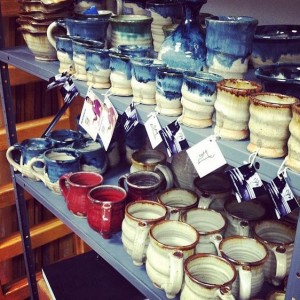
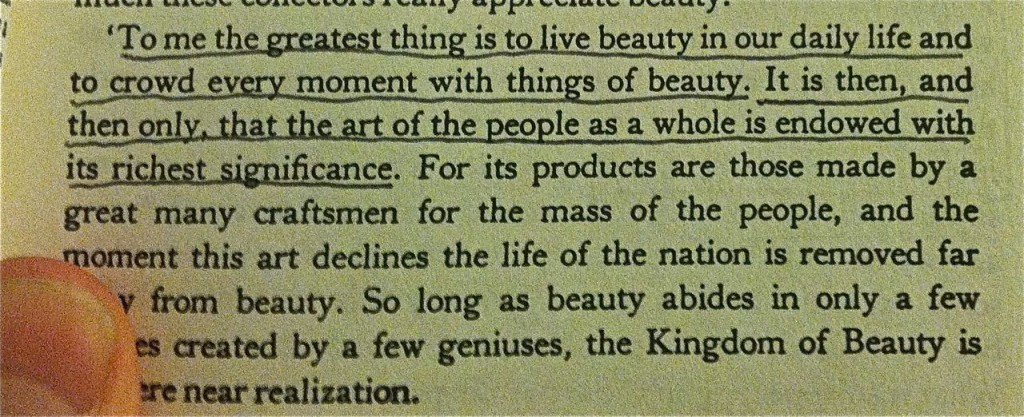
Glaze Chemistry and Alchemy

The New World Dictionary, Copyright 1967
In many ways, the work of the modern potter mirrors the work of the ancient alchemist. Potters blend earthly materials like clay, stone, and ash, into complicated glaze mixtures. Then through fire, these base substances transform into precious works of art. With glaze chemistry, and one part modern alchemy, potters turn the natural elements we once took for granted into the treasured artifacts we display in our homes and galleries.
It’s interesting to see how much the glazing, alchemy, and human life relate to each other. Bernard Leach, author of A Potter’s Book, helps us understand glazes by relating them to the body. He says most glazes have 3 main parts -the blood, bone, and flesh. Here’s how they work:
1.) Fluxing agent or “life blood of the glaze” – causes the glaze materials to melt and flow together in the kiln firing.
2.) Refractory or “bone of the glaze” – resists heat and melting, providing structure and strength to the glaze body.
3.) Glass Former or “flesh of the glaze” – creates complexity, depth and unique qualities.
(page 133-134)
Similar to Bernard Leach, the early alchemists fused their chemical efforts with the body. Calling their experiments the Magnum Opus, or “Great Work,” these men searched tirelessly for the right chemical concoctions that would enrich life or prevent death. In some ways, full-time potters do the same through glaze chemistry. They are constantly searching for that perfect potion that will immortalize a clay body and turn sand, water, and ash into gold.
These 2 books, by potters John Britt and Phil Rogers, gave Joel the necessary skills to develop that perfect glaze surface, but like the early alchemists, he’s still searching.
Like alchemy, glazing is often a fiery, messy, and sometimes toxic process. The kiln releases CO2, the powdered glaze materials are dangerous inhalants, and the heavy metal colorants cause skin irritation. Joel mixes all his glazing in an old boat shed. This dirty, dark laboratory gives him 24 hour access to glaze experimentation, providing the perfect amount of chaos to create beautiful works.
Joel’s pottery has to be strong enough to be used in a coffee shop everyday. The Local Blend Baristas say they wash a mug up to 5 times per day, 7 days per week! With this in mind, Joel adapted the Nuka glaze to suit the stress. Traditionally a simple 3-ingredient mixture, Joel added more chemicals to strengthen the glaze surface, reducing flaws like pinholes and crazing while increasing durability and gloss. Here’s the recipe for all the curious potters out there:
Some potters spend their careers trying to find the right glaze mixtures. In next Friday’s post, we’ll delve into some of these mixtures more and explore the lure of pretty blue pottery.

“At my St. Ives workshop each summer we are asked by three visitors out of four for colour and yet more colour, blue and the more intense the better, is easily the favourite.”
– A Potter’s Book, Bernard Leach, page 36

